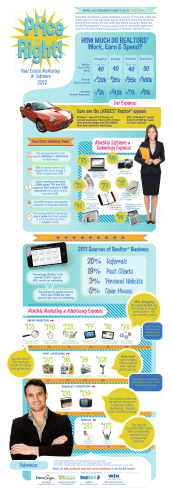
Planning Techniques With Partnerships (Including How To Unwind Them)
Planning Techniques With Partnerships (Including How To Unwind Them) Daniel H. Markstein, III A. The Transfer Tax Part 1. Paying The Estate Tax a. Options Available. Upon the death of a partner or shareholder who is not survived by a spouse or who fails to take advantage of the marital deduction and who does not leave his or her estate to charity, his or her personal representative must deal with the problem of paying the estate tax. i. Extending The Time For Payment (1) The Internal Revenue Code contains provisions for extending the time for payment of estate tax. I.R.C. §§6161 and 6166. (All section references are to the Internal Revenue Code unless otherwise indicated.) However, in the case of the first of those provisions, the extension is discretionary based upon a demonstration of “reasonable cause”; and in the other, the extension is elective but only if an “interest in a closely held business” exceeds 35 percent of the adjusted gross estate. §6166(a)(1), (a)(2). The term “interest in a closely held business” is defined to include “an interest as a partner in a partnership carrying on a trade or business” that meets tests relating to the percentage interest in the partnership included in the gross estate (20%) or the number of partners in the partnership (45 or fewer) and stock in a corporation carrying on a trade or business if 20% or more in value of the voting stock is included in the gross estate or the corporation had 45 or fewer shareholders.” §§6166(b)(1)(B) and (C). Daniel H. Markstein, III, is a partner in the Birmingham, Alabama, law firm of Maynard, Cooper & Gale, P.C. He can be reached at [email protected]. Part of this material was initially prepared for the Thirty-Seventh and Forty-First Annual Philip E. Heckerling Institute on Estate Planning, sponsored by the University of Miami School of Law in January, 2003 and 2007, respectively. It is reprinted with the permission of the Heckerling Institute and the University of Miami and published by Matthew Bender & Co., Inc., one of the LEXIS Publishing Companies. All rights reserved. ALI-ABA Estate Planning Course Materials Journal | 19 20 | ALI-ABA Estate Planning Course Materials Journal June 2007 (A) A distinguished commentator recently reported on the Treasury Department’s renewed emphasis on the lien that is created by a section 6166 election. Dennis I. Belcher, Paying the Estate Tax Attributable to a Private Business Using IRC Section 6166, IRC Section 303, and Graegin-Style Promissory Notes, 39 U. Miami Philip E. Heckerling Inst. on Est. Pl. ¶ 607 (2005). (2) For partnerships and corporations that meet those tests, special low interest rates are provided; however, for decedents dying after 1997, any interest incurred cannot be deducted as an administration expense. §§6601(j); 2053(c)(1)(D). No such limitation is imposed upon the deduction of interest incurred under section 6161 or upon interest incurred on amounts borrowed from a third-party lender, such as a bank, provided that the interest expense is “actually and necessarily” incurred and is allowable under local law. §2053(a)(2); Treas. Reg. §20.2053-3(a); Hibernia Bank v. U.S., 581 F.2d 741 (9th Cir. 1978); Estate of Millikin v. Commissioner, 125 F.3d 339 (6th Cir. 1997); Estate of Bahr v. Commissioner, 68 T.C. 74 (1977); Rev. Rul. 81-154, 1981-1C.B. 470 (the interest on debt incurred to satisfy federal estate tax liability is a deductible administration expense to the extent allowable under local law); Pvt. Letter Rul. 200020011 (Feb. 15, 2000); Pvt. Letter Rul. 199952039 (September 30, 1999). ii. Borrowing. Thus, the problem of raising the cash required to pay the income tax attracted by closely held corporate stock or a partnership interest that is illiquid presents an opportunity for a significant estate tax reduction. (1) Before the amendment of section 2053 denying the deduction for interest incurred on tax deferred under section 6166, the Service had ruled that when liquidation of debt incurred to pay estate tax could be accelerated by election or default, that possibility rendered any estimate of future interest charges vague and uncertain; and for that reason the interest expense was deductible only when the interest accrued and was paid, requiring annual re-computation of the estate tax and filing of claims for refund. Rev. Rul. 80-250, 1980-2 C. B. 278. (2) In a subsequent ruling, the Service addressed the estate of a decedent which consisted almost entirely of stock in a closely held corporation. Because the estate did not have sufficient liquidity to pay the estate tax and because no election was made under section 6166, the executor borrowed the funds required, which were to be repaid over a period of six years at 10 percent interest with a privilege of prepayment without penalty and acceleration at the lender’s option upon default. The Service ruled that because of the possibilities of prepayment or acceleration of the debt upon default, any estimate of the interest to be paid was vague and uncertain; and, for that reason, the estimated amount of interest that would accrue on the loan was not deductible under section 2053, but interest was deductible only to the extent that it had accrued. Rev. Rul. 84-75, 1984-1 C.B. 193. In such cases, supplemental information must be filed on form 706 to report and deduct interest as it accrues. Rev. Proc. 81-27, 1981-2 C.B. 548. (3) A line of cases approves the deduction of interest incurred on money borrowed to pay estate taxes as an administration expense for estate tax purposes. Hipp v. United States, 72-1 U.S.T.C. (CCH) ¶12,824 (D.S.C. 1971); Estate of Todd v. Commissioner, 57 T. C. 288 (1971); Es- Planning Techniques With Partnerships | 21 tate of Thompson v. Commissioner, 76 T.C.M. (CCH) 426 (1998); Estate of Graegin v. Commissioner, 56 T.C.M. (CCH) 387 (1988); Estate of McKee v. Commissioner, 72 T.C.M. (CCH) 324 (1996); Estate of Sturgis v. Commissioner, 54 T.C.M. 221 (1987). (A) In some of these cases, the estate borrowed from the closely held corporation whose stock constituted a substantial portion of the decedent’s estate. Estate of McKee v. Commissioner, supra; Estate of Graegin v. Commissioner, supra; Estate of Todd v. Commissioner, supra. But see Tech. Adv. Mem. 200513028 (September 15, 2004), denying the estate tax deduction for interest on a 10-year loan with principal and interest payable on the maturity date, when 57.6 percent of the limited partnership’s assets were substantially liquid and decedent’s child was the co-executor of the estate, the general partner of the limited partnership, and the beneficiary of one of two testamentary trusts to which the residue of the estate— primarily a 99 percent limited partnership interest—was bequeathed. In some of these cases money was borrowed from a bank. Estate of McKee v. Commissioner, supra; Estate of Sturgis v. Commissioner, supra; Hipp v. U. S., supra. In one case, the funds were borrowed from the decedent’s irrevocable life insurance trust. Estate of Thompson v. Commissioner, supra. (B) Court approval for the borrowing was obtained in some of the cases (Hipp v. U.S.) and not in others (Estate of Thompson v. Commissioner; Estate of McKee v. Commissioner; Estate of Todd v. Commissioner), but in all cases the borrowing and/or the deduction of the interest expense was allowed under the applicable state law. (C) In one case, the major asset of the estate was thinly traded over-the-counter stock; and the administrator, who was also chairman of the company, felt that liquidation of the stock would drive the price lower. Hipp v. U.S. (D) In one case, the borrowing occurred notwithstanding the holding by the estate of significant liquid assets in light of very substantial holdings of timberland. Estate of Sturgis v. Commissioner. (E) In one case, the executor declined the opportunity to clear-cut timber. Estate of Thompson v. Commissioner. (F) The consistent themes that underlie these cases are that the executor determined that borrowing was necessary in order to avoid the forced sale of illiquid assets, and the courts were loathe to second guess the judgment of the fiduciary who was not shown to have acted other than in the best interest of the estate in question. (4) When corporate stock or a limited partnership interest makes up a substantial portion of the decedent’s estate, a redemption or a distribution of marketable securities or funds sufficient to enable the estate to pay the tax would appear to weaken the argument that the interest in question is illiquid and should be subject to valuation discounts. See Strangi v. Commissioner, 417 F.3d 468 (5th Cir. 2005); Estate of Rosen v. Commissioner, 91 T.C.M. (CCH) 1220 (2006). Although borrowing from the entity itself has been approved, such action may give rise to some of the same arguments that could be advanced in the case of redemptions or distributions by 22 | ALI-ABA Estate Planning Course Materials Journal June 2007 the corporation or partnership. The position of the estate would appear to be strengthened if the lender were an independent third party. (5) Although commercial banks may be reluctant to make fixed-rate term loans of up to six years, such a loan with a prohibition against prepayment would appear to be necessary to insure deductibility of the interest on the estate tax return as an administration expense. If the interest is deductible as an administration expense, then the effect is significantly to lower the estate tax by the deduction of all accrued interest, apparently without discounting that accrued interest to present value. (6) Thus, a double benefit becomes available: the amount of the estate tax is reduced by the interest deduction, and the interest deduction is available on the estate tax return well before any, much less all, of the interest shall have been paid. Obviously, the greater the deduction the less the amount that must be borrowed in order to pay the estate tax. (7) Of course, there may be other financial benefits, such as growth in the capital that would otherwise have been used to pay estate taxes or continued enjoyment of income from that capital, in both cases at rates more favorable than the cost of borrowing. (8) The cost of achieving these benefits is that amounts deducted as administration expenses on the decedent’s estate tax return cannot be deducted from income on the estate’s fiduciary income tax return. §642(g). iii. Variable Rate Demand Notes (1) The question that arises is how can the personal representative make a fixed-rate thirdparty loan, the interest upon which will be deductible in full on the estate tax return. One answer may be a corporate financing technique that has become popular in recent years—the variable rate demand note (“VRDN”). (A) VRDNs are taxable, floating-rate, credit-enhanced securities that are sold to institutional investors in the public capital markets, essentially a floating-rate bond issue. (B) They are normally re-priced on a weekly basis between five to 30 basis points over the 30-day London interbank offered rates (“LIBOR”). (C) The holder of the VRDN can put the note to the issuer upon seven days’ notice; and, if the put is exercised, a re-marketing agent re-markets the notes. (D) The coupon rate averages about 66 percent of the prime rate, but it does not reflect the cost of the liquidity facility/letter of credit. (E) In the case of a financing by a decedent’s estate, VRDNs are issued by the estate based not upon the estate’s financial condition but rather upon the financial condition of the bank that supports the facility by its letter of credit. (2) The Parties To The Transaction Planning Techniques With Partnerships | 23 (A) The parties involved are the estate as the borrower, a bank as the letter of credit provider, a trustee as the fiduciary agent for the note holders, and a placement/re-marketing agent. (B) The purchasers of the VRDNs rely upon the financial condition of the bank as the letter of credit provider. (C) The placement/re-marketing agent initially prices, places, and from time to time re-markets the notes. (D) The letter of credit terms, including security, are negotiated between the borrower (the estate) and the bank as the letter of credit provider. (E) The letter of credit is used as a liquidity instrument if the notes are put back to the re-marketing agent. (F) No registration requirements are applicable if a letter of credit is used. Securities Act of 1933 §3, 15 U.S.C. §77c (a)(2). (3) Fixing The Interest Rate. Although, typically, the borrower can convert from a floating rate to a fixed rate, the estate can establish a fixed rate upon issuance by the use of an interest rate swap. (A) An interest rate swap is an exchange of interest payments that converts a variable rate note into a fixed rate obligation. In an interest rate swap, the principal amount is never exchanged and, therefore, is referred to as a “notional amount.” A swap is effected by a contract which states that the borrower will pay the counter-party a fixed rate and the counter-party, in turn, will pay the borrower a floating rate. Harrison B. McCawley, Transactions in Stock, Securities and Other Financial Instruments, 184-4th Tax Mgmt. VII.C. (B) Since the swap will be based off LIBOR and the VRDN will be based on the credit of the bank issuing the letter of credit, the correlation will not be exact every month. Historically, over the course of a year, the difference in the average LIBOR rate and the average VRDN rate is equal to no more than 10 basis points. Therefore, in determining the fixed rate cost, the additional basis points are added to obtain the all-in costs. (4) The Cost Of Borrowing. In determining the cost of a VRDN, the borrower must consider the associated fees. There are two types of fees: the first is issuance fees, which are non-recurring, and the second is annual fees, which recur for as long as the notes are outstanding. (A) Issuance Fees. Included in the one-time only fees are the placement fee, fees for the bank’s legal counsel, the trustee’s origination fee, and the rating agency fee. These fees are substantial, but they can be included in the amount of the loan. To show the true costs of the borrowing, these fees are amortized over the life of the bond issue in calculating the all-in rate. (B) Annual Fees. The fees that are paid annually throughout the life of the issue are the letter of credit fee, the re-marketing fee, and the trust administration fee. The letter of credit pricing varies based on the length of the term selected, for example 45 basis points
© Copyright 2026









